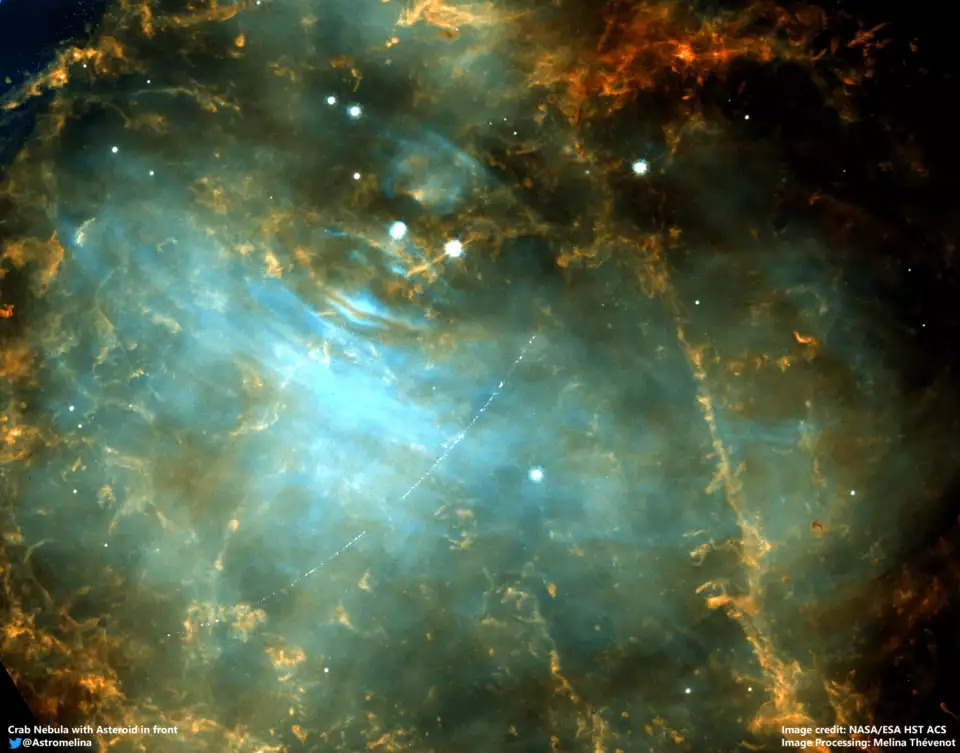Astronomers discover asteroid treasure trove in old Hubble Space Telescope data

Astronomers have revealed the trails of nearly 1,500 new asteroids hidden in data gathered by NASA's most venerable space telescope.
In a new study, astronomers and a team of amateur scientists have worked together to comb through archival data from the Hubble Space Telescope. The project began on International Asteroid Day in 2019, when a team of astronomers launched the "Hubble Asteroid Hunter" project on Zooniverse, a popular platform for crowdsourcing science. The project's aim was to identify asteroids in old data from Hubble; signals that, in other studies, might have just been filtered out as noise.
"One astronomer's trash can be another astronomer's treasure," study lead Sandor Kruk, a researcher at the Max Planck Institute for Extraterrestrial Physics in Germany, said in a statement. "The amount of data in astronomy archives increases exponentially and we wanted to make use of this amazing data."
Related: The greatest asteroid missions of all time!
The team used observations captured by Hubble's ACS and WFC3 cameras from between April 30, 2002, and March 14, 2021. Within this data, the asteroid hunters combed through over 37,000 composite images.
Because the typical observation time for these instruments is 30 minutes, the team knew that moving asteroids would appear in the images as streaks. But such streaks can be tricky for automated computer systems to detect, making the team's efforts uniquely valuable.
"Due to the orbit and motion of Hubble itself, the streaks appear curved in the images, which makes it difficult to classify asteroid trails — or rather, it is difficult to tell a computer how to automatically detect them," Kruk said. "Therefore we needed volunteers to do an initial classification, which we then used to train a machine-learning algorithm."
Get the Space.com Newsletter
Breaking space news, the latest updates on rocket launches, skywatching events and more!
For the project, 11,482 citizen science volunteers perused these thousands of images for streaks. Through their efforts, they made 1,488 tentative identifications of asteroids in about 1% of the Hubble images provided, according to the statement. With the classifications from the citizen scientists, the astronomers leading the study trained an automated machine-learning algorithm to search for additional asteroid trails in the data that may have been missed. The algorithm added about 900 detections to the lot, which now totaled 2,487 possible asteroids.
This total was later whittled down by Kruk and fellow study authors astronomers Pablo García Martín from the Autonomous University of Madrid and Marcel Popescu from the Astronomical Institute of the Romanian Academy. The three scientists inspected the images further, detecting trails and excluding cosmic rays or other non-asteroid objects that could have made them. This narrowed down the number of images with asteroids, resulting in a final total of 1,701 asteroid trails stemming from 1,316 Hubble images.
About one-third of the confirmed trails were further identified as known asteroids listed in the Minor Planet Center's database of solar system objects. Two-thirds of the trails remain unidentified, although even the identified asteroids will require further observation, according to the statement.
So far, the researchers do know that the identified asteroids "are systematically fainter and therefore probably smaller than typical asteroids detected from the ground, with a similar speed and distribution on the sky as the known asteroids in the so-called Main Belt," the statement reads.
The team aims to follow up on the new study by using the shape of the asteroid trails to try to determine how far away the space rocks are from Earth and derive information about their orbits.
"The asteroids are remnants from the formation of our solar system, which means that we can learn more about the conditions when our planets were born," Kruk said. "Using such a combination of human and artificial intelligence to scour vast amounts of data is a big game changer and we will also use these techniques for other upcoming surveys, such as with the EUCLID telescope."
The EUCLID telescope, which will launch next year if all goes well, is a European observatory designed to investigate dark matter and dark energy in the universe. However, scientists estimate it will also spot 150,000 objects in the solar system, according to the statement.
Email Chelsea Gohd at cgohd@space.com or follow her on Twitter @chelsea_gohd. Follow us on Twitter @Spacedotcom and on Facebook.
Join our Space Forums to keep talking space on the latest missions, night sky and more! And if you have a news tip, correction or comment, let us know at: community@space.com.

Chelsea “Foxanne” Gohd joined Space.com in 2018 and is now a Senior Writer, writing about everything from climate change to planetary science and human spaceflight in both articles and on-camera in videos. With a degree in Public Health and biological sciences, Chelsea has written and worked for institutions including the American Museum of Natural History, Scientific American, Discover Magazine Blog, Astronomy Magazine and Live Science. When not writing, editing or filming something space-y, Chelsea "Foxanne" Gohd is writing music and performing as Foxanne, even launching a song to space in 2021 with Inspiration4. You can follow her on Twitter @chelsea_gohd and @foxannemusic.









